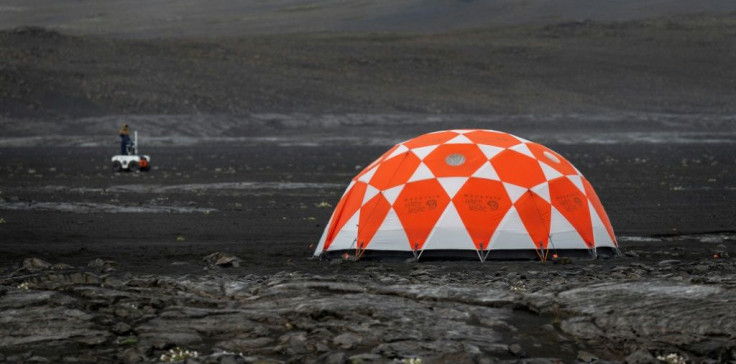Scientists Discover Mud On Mars Behaves Like Boiling Toothpaste [WATCH]
KEY POINTS
- Scientists studied how mud flows from volcanoes on Mars
- Mud under Martian conditions behaved like boiling toothpaste
- Findings of the study could affect geological studies on Mars
Scientists studying how mud moves from volcanoes on Mars learned that it behaves similar to boiling toothpaste. They believe their findings could affect how geographical studies are conducted on the Red Planet.
The study, which was led by scientists from the Czech Academy of Sciences’ Institute of Geophysics, focused on Martian volcanoes that emit mudflows instead of molten rock. It was published in the journal Nature.
For the study, the scientists used an instrument known as the Mars Chamber in order to replicate the conditions on the Red Planet. As part of the experiment, the scientists poured mud inside the chamber under temperature conditions of -20 degrees Celsius. Also, the atmospheric pressure within the chamber was 150 less than that of Earth.
The scientists learned that upon pouring the mud under Martian conditions, it immediately formed clumps and various shapes. On the other hand, under Earth conditions, the same type of mud flowed freely.
As noted by the scientists, the mud on Mars behaved similarly to how boiling toothpaste would move. The scientists explained that due to Mars’ extreme conditions, the outer layer of the mud immediately freezes once it gets exposed. However, since the mud is thick enough, its inner layer is able to maintain a fluid state.
According to Manish Patel, co-author of the study, this is the reason why the mud forms clumps under Martian conditions.
“The skin on the fluid freezes, but this flow is thick enough that the inside remains fluid,” he explained according to BBC. “So the skin will stop the flow for a bit, but then the momentum from the fluid inside breaks through at weak points in the skin, and the flow propagates forward.”
As noted by the scientists, the findings of their study could affect how geological studies are conducted on Mars. Since the mud formations resemble a type of lava known as pahoehoe, which can be commonly seen at Hawaii’s Kilauea volcano, it could be mistaken as molten rock on Mars due to its clumpy appearance and movement.
“You'll look at some features [from space] and you won't know for sure whether they are the result of lava flows or mudflows,” the study’s lead author Petr Broz explained. “Without a geologist on the ground to hit them with a hammer, it will be hard to tell.”

© Copyright IBTimes 2024. All rights reserved.





















